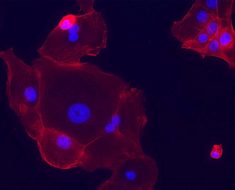
Usually, influenza pandemics are sparked when a virus jumps from birds to pigs, and then, eventually, to humans.
Influenza viruses in an animal population, where there are many viral strains in one place, can mix together to create new forms.
When new strains jump to humans, our immune systems — which have no experience of these unknown pathogens — fail to protect us.
For instance, the 2009 H1N1 pandemic was caused by a virus that began in birds; then, it moved into pigs, where it picked up new genes from flu viruses already present in swine, before leaping into humans.
Generally, birds and swine are considered the most dangerous melting pots for the influenza virus; viruses in dogs and horses seem to have much less viral genetic diversity.

Influenza and dogs
Although much less common, 15 years ago, researchers documented an influenza virus that had entered a horse before jumping into a canine. This became the first circulating canine influenza virus.
Then, just 5 years ago, a canine influenza virus of avian origin was discovered in farmed dogs in China. A new study, published this week in the journal mBio, moves the story on another step.

The scientists — who are based at the Center for Research on Influenza Pathogenesis Icahn School of Medicine at Mount Sinai in New York City, NY — looked in detail at the genomes of 16 influenza viruses from dogs in Southern China’s Guangxi autonomous region.
The viruses were detected in dogs that attended veterinary clinics due to respiratory problems. The authors explain their findings and their importance:
“[W]hat we have found is another set of viruses that come from swine that are originally avian in origin, and now they are jumping into dogs and have been reassorted with other viruses in dogs.”
“We now have H1N1, H3N2, and H3N8 in dogs. They are starting to interact with each other. This is very reminiscent of what happened in swine 10 years before the H1N1 pandemic.”

Next steps and new concerns
This new virus that the researchers found is H1N1, but it is distinct from the strain that caused the previous epidemic. To, the next step will be to test the virus on human serum.
“If there is a lot of immunity against these viruses,” says investigator Dr. Adolfo García-Sastre, “they will represent less of a risk, but we now have one more host in which influenza virus is starting to have a diverse genotypic and phenotypic characteristics, creating diversity in a host which is in very close contact to humans.”
It may be that humans already have protection against this particular strain, but that does not take the concern away entirely.
“The diversity in dogs has increased so much now that the type of combinations of viruses that can be created in dogs represent potential risk for a virus to jump to a dog into a human.”
Dr. Adolfo García-Sastre
In the United States, whenever avian flu is detected in a population of birds, they are culled. This would be an unpopular solution if the virus was to infect domestic dogs.
Dr. García-Sastre says, “There are attempts to restrict influenza virus in pigs through vaccination, and one could consider vaccination for dogs.”
Hopefully, interventions of that nature won’t be necessary, but only time will tell whether dog flu could become a serious reason for concern.
Source: Read Full Article





